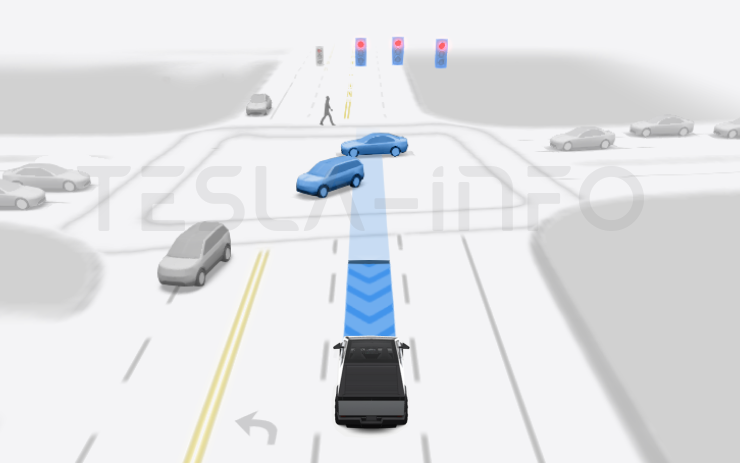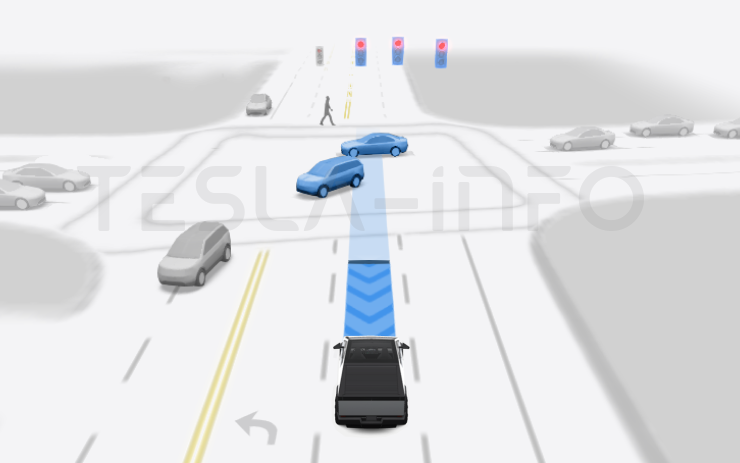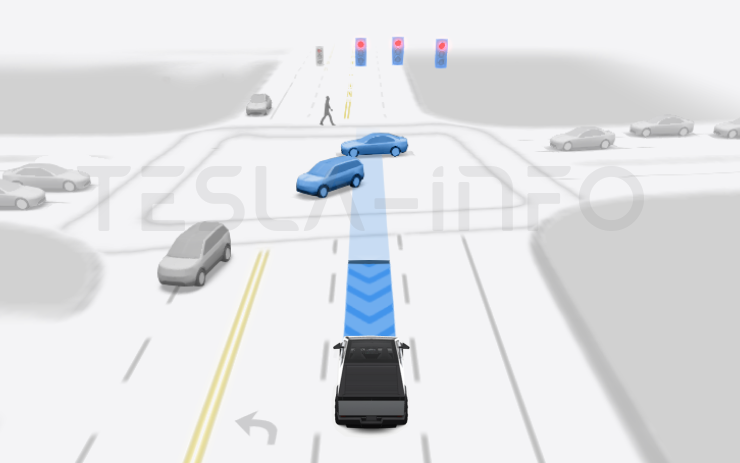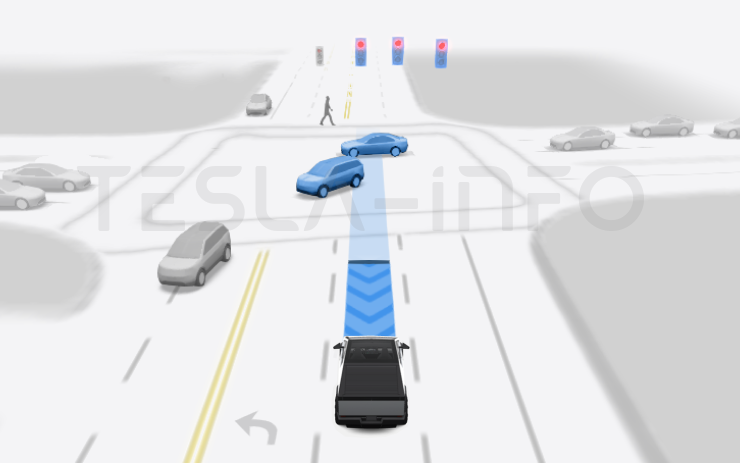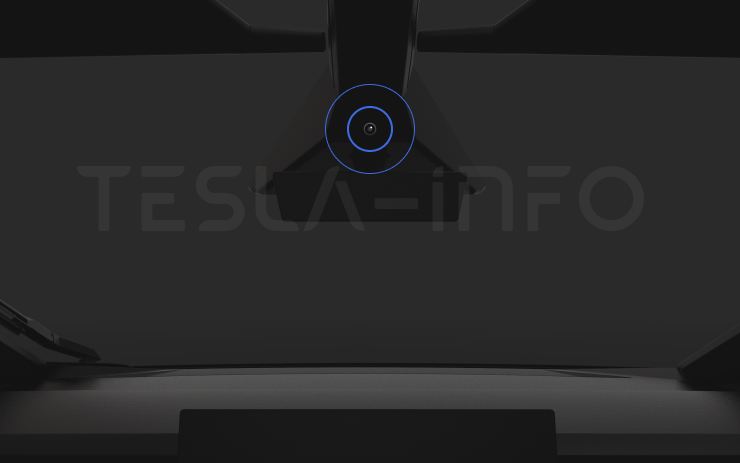Tesla Software Release 2024.39.10
Last updated 07-Dec-2025
Tesla Software release 2024.39.10 including Camera Visibility Detection, FSD (Supervised) v13.2, Full Self-Driving (Supervised), Update to Data Sharing.
Included releases
2024.39.10, (no cars)
Regional coverage by model
North America-----Europe-----RoW-----
FSD (Supervised) v13.2 (part of 2024.39.10)
FSD (Supervised) v13 upgrades every part of the end-to-end driving network.
Includes:
- 36 Hz, full-resolution AI4 video inputs
- Native AI4 inputs and neural network architectures
- 4.2x data scaling
- 5x training compute scaling (enabled by the Cortex cluster)
- Reduced photon-to-control latency by 2x
- Speed Profiles on both City Streets and Highways
- Start FSD (Supervised) from Park with the touch of a button
- Integrated unpark, reverse, and park capabilities
- Improved reward predictions for collision avoidance
- Improved camera cleaning
- Redesigned controller for smoother, more accurate tracking
- Dynamic routing around road closures, which displays them along an affected route when they are detected by the fleet
Upcoming Improvements:
- 3x model size scaling
- 3x model context length scaling
- Audio inputs for better handling of emergency vehicles
- Improved reward predictions for navigation
- Improvements to false braking and slower driving in parking lots
- Support for destination options including pulling over, parking in a spot, driveway, or garage
- Efficient representation of maps and navigation inputs
- Improved handling of camera occlusions
Full Self-Driving (Supervised) (part of 2024.39.10)
Under your supervision, Full Self-Driving (Supervised) can drive your Tesla almost anywhere. It will make lane changes, select forks to follow your navigation route, navigate around other vehicles and objects, and make left and right turns. You and anyone you authorize must use additional caution and remain attentive. It does not make your vehicle autonomous. Do not become complacent.
Full Self-Driving (Supervised) is enabled on your vehicle. To use the feature, pull the drive stalk down once. You can disable Full Self-Driving (Supervised) in Autopilot Settings.
Update to Data Sharing (part of 2024.39.10)
Improve your vehicle's safety and convenience features such as emergency vehicle detection, by choosing to opt-in and share sound detection data with Tesla a short audio recording (up to 10 seconds) collected when a siren is approaching. Even if you opt-in to sharing this information with Tesla, sound detection data is not associated with your account or VIN.
Camera Visibility Detection (part of 2024.39.10)
At the end of your drive, you will receive a notification if poor camera visibility is detected. To view these images go to Service > Camera Visibility.
Images do not leave the vehicle and are not shared unless Data Sharing preferences permit. They are automatically deleted after two days. To review your Data Sharing settings, go to Software > Data Sharing.
Other release notes for the family: 2024.39
FSD (Supervised) v13.2.1 (part of 2024.39.15)
FSD (Supervised) v13 upgrades every part of the end-to-end driving network.
Includes:
- 36 Hz, full-resolution AI4 video inputs
- Native AI4 inputs and neural network architectures
- 4.2x data scaling
- 5x training compute scaling (enabled by the Cortex cluster)
- Reduced photon-to-control latency by 2x
- Speed Profiles on both City Streets and Highways
- Improved reward predictions for collision avoidance
- Dynamic routing around road closures, which displays them along an affected route when they are detected by the fleet
Upcoming Improvements:
- 3x model size scaling
- 3x model context length scaling
- Integrated unpark, reverse, and park capabilities
- Audio inputs for better handling of emergency vehicles
- Improved reward predictions for navigation
- Improvements to false braking and slower driving in parking lots
- Redesigned controller for smoother, more accurate tracking
- Support for destination options including pulling over, parking in a spot, driveway, or garage
- Efficient representation of maps and navigation inputs
- Improved camera cleaning and handling of camera occlusions
Seen in CA US
Seen on MS(2021+) MX(2022+) MY M3(H) CT
Seen on AP versions AP4
Seen on MCU hardware Ryzen
Full Self-Driving (Supervised) (part of 2024.39.15)
Under your supervision, Full Self-Driving (Supervised) can drive your Tesla almost anywhere. It will make lane changes, select forks to follow your navigation route, navigate around other vehicles and objects, and make left and right turns. You and anyone you authorize must use additional caution and remain attentive. It does not make your vehicle autonomous. Do not become complacent.
Full Self-Driving (Supervised) is enabled on your vehicle. To use the feature, press the right scroll wheel button once. You can disable Full Self-Driving (Supervised) in Autopilot Settings.
Seen in CA US
Seen on MS(2021+) MX(2022+) MY M3(H) CT
Seen on AP versions AP4
Seen on MCU hardware Ryzen
Update to Data Sharing (part of 2024.39.15)
Improve your vehicle's safety and convenience features such as siren recognition, by choosing to opt-in and share sound detection data with Tesla. A short audio recording is collected when an approaching emergency vehicle is recognized.
You can change your data sharing preferences at any time. Even if you opt-in, sound detection data is not associated with your account or VIN.
Seen in CA US
Seen on MS(2021+) MX(2022+) MY M3(H) CT
Seen on AP versions AP4
Seen on MCU hardware Ryzen
Camera Visibility Detection (part of 2024.39.15)
At the end of your drive, you will receive a notification if poor camera visibility is detected. To view these images go to Service > Camera Visibility.
Images do not leave the vehicle and are not shared unless Data Sharing preferences permit. They are automatically deleted after two days. To review your Data Sharing settings, go to Software > Data Sharing.
Seen in CA US
Seen on MS(2021+) MX(2022+) MY M3(H) CT
Seen on AP versions AP4
Seen on MCU hardware Ryzen
Start FSD (Supervised) from Park (part of 2024.39.15)
When enabled, a button will appear on the map when driver requirements are met, and the brake pedal is pressed and released. Driver requirements include (but are not limited to):
- Driver is seated in driver's seat
- Driver is buckled
- Cabin Camera is unobstructed
When Brake Confirm is disabled, pressing the button will allow Autopilot to apply the brakes and engage FSD (Supervised).
You can enable this feature in Autopilot > Start FSD (Supervised) from Park.
This feature does not make your vehicle autonomous and you must remain attentive and be ready to take over at any time. Only a licensed driver authorized to operate the vehicle should be allowed access to the driver's seat position any time the vehicle is not in Theater or Arcade modes.
Seen in CA US
Seen on MS(2021+) MX(2022+) MY M3(H)
Seen on AP versions AP4
Seen on MCU hardware Ryzen
FSD (Supervised) v13.2 (part of 2024.39.10)
FSD (Supervised) v13 upgrades every part of the end-to-end driving network.
Includes:
- 36 Hz, full-resolution AI4 video inputs
- Native AI4 inputs and neural network architectures
- 4.2x data scaling
- 5x training compute scaling (enabled by the Cortex cluster)
- Reduced photon-to-control latency by 2x
- Speed Profiles on both City Streets and Highways
- Start FSD (Supervised) from Park with the touch of a button
- Integrated unpark, reverse, and park capabilities
- Improved reward predictions for collision avoidance
- Improved camera cleaning
- Redesigned controller for smoother, more accurate tracking
- Dynamic routing around road closures, which displays them along an affected route when they are detected by the fleet
Upcoming Improvements:
- 3x model size scaling
- 3x model context length scaling
- Audio inputs for better handling of emergency vehicles
- Improved reward predictions for navigation
- Improvements to false braking and slower driving in parking lots
- Support for destination options including pulling over, parking in a spot, driveway, or garage
- Efficient representation of maps and navigation inputs
- Improved handling of camera occlusions
Seen in US
Seen on MY
Seen on AP versions AP4
Full Self-Driving (Supervised) (part of 2024.39.10)
Under your supervision, Full Self-Driving (Supervised) can drive your Tesla almost anywhere. It will make lane changes, select forks to follow your navigation route, navigate around other vehicles and objects, and make left and right turns. You and anyone you authorize must use additional caution and remain attentive. It does not make your vehicle autonomous. Do not become complacent.
Full Self-Driving (Supervised) is enabled on your vehicle. To use the feature, pull the drive stalk down once. You can disable Full Self-Driving (Supervised) in Autopilot Settings.
Seen in US
Seen on MY
Seen on AP versions AP4
Update to Data Sharing (part of 2024.39.10)
Improve your vehicle's safety and convenience features such as emergency vehicle detection, by choosing to opt-in and share sound detection data with Tesla a short audio recording (up to 10 seconds) collected when a siren is approaching. Even if you opt-in to sharing this information with Tesla, sound detection data is not associated with your account or VIN.
Seen in US
Seen on MY
Seen on AP versions AP4
Camera Visibility Detection (part of 2024.39.10)
At the end of your drive, you will receive a notification if poor camera visibility is detected. To view these images go to Service > Camera Visibility.
Images do not leave the vehicle and are not shared unless Data Sharing preferences permit. They are automatically deleted after two days. To review your Data Sharing settings, go to Software > Data Sharing.
Seen in US
Seen on MY
Seen on AP versions AP4
FSD (Supervised) v12.5.5.3 (part of 2024.39.5)
FSD (Supervised) v12 upgrades the city-streets driving stack to a single end-to-end neural network trained on millions of video clips, replacing over 300k lines of explicit C++ code.
- Includes vision-based attention monitoring with sunglasses
- Includes End to End on Highway
Upcoming Improvements:
- Earlier and more natural lane change decisions
- Improved performance in parking lots
- Improved performance at intersections and stops
- Introduction of Speed Profile
Note: This is an early access build. You and anyone you authorize must use additional caution and remain attentive. It does not make your vehicle autonomous. Do not become complacent.
Seen in CA US
Seen on CT
Seen on AP versions AP4
Full Self-Driving (Supervised) (part of 2024.39.5)
Under your supervision, Full Self-Driving (Supervised) can drive your Tesla almost anywhere. It will make lane changes, select forks to follow your navigation route, navigate around other vehicles and objects, and make left and right turns. You and anyone you authorize must use additional caution and remain attentive. It does not make your vehicle autonomous. Do not become complacent.
Full Self-Driving (Supervised) is enabled on your vehicle. To use the feature, press the right scroll wheel button once. You can disable Full Self-Driving (Supervised) in Autopilot Settings.
Seen in CA US
Seen on CT
Seen on AP versions AP4
Vision-Based Attention Monitoring (part of 2024.39.5)
When Full Self-Driving (Supervised) is enabled, the driver monitoring system primarily relies on the cabin camera to determine driver attentiveness. Cabin camera must have clear visibility (e.g., camera is not occluded, eyes, arms, are visible, there is sufficient cabin illumination, and the driver is looking forward at the road). In other circumstances, the driver monitoring system will primarily rely on torque-based (steering wheel) monitoring to detect driver attentiveness.
If the cabin camera detects inattentiveness, a warning will appear. The warning can be dismissed by the driver immediately reverting their attention back to the road ahead. Warnings will escalate depending on the nature and frequency of detected inattentiveness, with continuous inattention leading to a Strikeout.
Seen in CA US
Seen on CT
Seen on AP versions AP4
How do I get the latest Software Update from Tesla?
FSD (Supervised) v13.2 (part of 2024.39.10)
FSD (Supervised) v13 upgrades every part of the end-to-end driving network.
Includes:
- 36 Hz, full-resolution AI4 video inputs
- Native AI4 inputs and neural network architectures
- 4.2x data scaling
- 5x training compute scaling (enabled by the Cortex cluster)
- Reduced photon-to-control latency by 2x
- Speed Profiles on both City Streets and Highways
- Start FSD (Supervised) from Park with the touch of a button
- Integrated unpark, reverse, and park capabilities
- Improved reward predictions for collision avoidance
- Improved camera cleaning
- Redesigned controller for smoother, more accurate tracking
- Dynamic routing around road closures, which displays them along an affected route when they are detected by the fleet
Upcoming Improvements:
- 3x model size scaling
- 3x model context length scaling
- Audio inputs for better handling of emergency vehicles
- Improved reward predictions for navigation
- Improvements to false braking and slower driving in parking lots
- Support for destination options including pulling over, parking in a spot, driveway, or garage
- Efficient representation of maps and navigation inputs
- Improved handling of camera occlusions
Full Self-Driving (Supervised) (part of 2024.39.10)
Under your supervision, Full Self-Driving (Supervised) can drive your Tesla almost anywhere. It will make lane changes, select forks to follow your navigation route, navigate around other vehicles and objects, and make left and right turns. You and anyone you authorize must use additional caution and remain attentive. It does not make your vehicle autonomous. Do not become complacent.
Full Self-Driving (Supervised) is enabled on your vehicle. To use the feature, pull the drive stalk down once. You can disable Full Self-Driving (Supervised) in Autopilot Settings.
Update to Data Sharing (part of 2024.39.10)
Improve your vehicle's safety and convenience features such as emergency vehicle detection, by choosing to opt-in and share sound detection data with Tesla a short audio recording (up to 10 seconds) collected when a siren is approaching. Even if you opt-in to sharing this information with Tesla, sound detection data is not associated with your account or VIN.
Camera Visibility Detection (part of 2024.39.10)
At the end of your drive, you will receive a notification if poor camera visibility is detected. To view these images go to Service > Camera Visibility.
Images do not leave the vehicle and are not shared unless Data Sharing preferences permit. They are automatically deleted after two days. To review your Data Sharing settings, go to Software > Data Sharing.
FSD (Supervised) v13.2.1 (part of 2024.39.15)
FSD (Supervised) v13 upgrades every part of the end-to-end driving network.
Includes:
- 36 Hz, full-resolution AI4 video inputs
- Native AI4 inputs and neural network architectures
- 4.2x data scaling
- 5x training compute scaling (enabled by the Cortex cluster)
- Reduced photon-to-control latency by 2x
- Speed Profiles on both City Streets and Highways
- Improved reward predictions for collision avoidance
- Dynamic routing around road closures, which displays them along an affected route when they are detected by the fleet
Upcoming Improvements:
- 3x model size scaling
- 3x model context length scaling
- Integrated unpark, reverse, and park capabilities
- Audio inputs for better handling of emergency vehicles
- Improved reward predictions for navigation
- Improvements to false braking and slower driving in parking lots
- Redesigned controller for smoother, more accurate tracking
- Support for destination options including pulling over, parking in a spot, driveway, or garage
- Efficient representation of maps and navigation inputs
- Improved camera cleaning and handling of camera occlusions
Seen in CA US
Seen on MS(2021+) MX(2022+) MY M3(H) CT
Seen on AP versions AP4
Seen on MCU hardware Ryzen
Full Self-Driving (Supervised) (part of 2024.39.15)
Under your supervision, Full Self-Driving (Supervised) can drive your Tesla almost anywhere. It will make lane changes, select forks to follow your navigation route, navigate around other vehicles and objects, and make left and right turns. You and anyone you authorize must use additional caution and remain attentive. It does not make your vehicle autonomous. Do not become complacent.
Full Self-Driving (Supervised) is enabled on your vehicle. To use the feature, press the right scroll wheel button once. You can disable Full Self-Driving (Supervised) in Autopilot Settings.
Seen in CA US
Seen on MS(2021+) MX(2022+) MY M3(H) CT
Seen on AP versions AP4
Seen on MCU hardware Ryzen
Update to Data Sharing (part of 2024.39.15)
Improve your vehicle's safety and convenience features such as siren recognition, by choosing to opt-in and share sound detection data with Tesla. A short audio recording is collected when an approaching emergency vehicle is recognized.
You can change your data sharing preferences at any time. Even if you opt-in, sound detection data is not associated with your account or VIN.
Seen in CA US
Seen on MS(2021+) MX(2022+) MY M3(H) CT
Seen on AP versions AP4
Seen on MCU hardware Ryzen
Camera Visibility Detection (part of 2024.39.15)
At the end of your drive, you will receive a notification if poor camera visibility is detected. To view these images go to Service > Camera Visibility.
Images do not leave the vehicle and are not shared unless Data Sharing preferences permit. They are automatically deleted after two days. To review your Data Sharing settings, go to Software > Data Sharing.
Seen in CA US
Seen on MS(2021+) MX(2022+) MY M3(H) CT
Seen on AP versions AP4
Seen on MCU hardware Ryzen
Start FSD (Supervised) from Park (part of 2024.39.15)
When enabled, a button will appear on the map when driver requirements are met, and the brake pedal is pressed and released. Driver requirements include (but are not limited to):
- Driver is seated in driver's seat
- Driver is buckled
- Cabin Camera is unobstructed
When Brake Confirm is disabled, pressing the button will allow Autopilot to apply the brakes and engage FSD (Supervised).
You can enable this feature in Autopilot > Start FSD (Supervised) from Park.
This feature does not make your vehicle autonomous and you must remain attentive and be ready to take over at any time. Only a licensed driver authorized to operate the vehicle should be allowed access to the driver's seat position any time the vehicle is not in Theater or Arcade modes.
Seen in CA US
Seen on MS(2021+) MX(2022+) MY M3(H)
Seen on AP versions AP4
Seen on MCU hardware Ryzen
FSD (Supervised) v13.2 (part of 2024.39.10)
FSD (Supervised) v13 upgrades every part of the end-to-end driving network.
Includes:
- 36 Hz, full-resolution AI4 video inputs
- Native AI4 inputs and neural network architectures
- 4.2x data scaling
- 5x training compute scaling (enabled by the Cortex cluster)
- Reduced photon-to-control latency by 2x
- Speed Profiles on both City Streets and Highways
- Start FSD (Supervised) from Park with the touch of a button
- Integrated unpark, reverse, and park capabilities
- Improved reward predictions for collision avoidance
- Improved camera cleaning
- Redesigned controller for smoother, more accurate tracking
- Dynamic routing around road closures, which displays them along an affected route when they are detected by the fleet
Upcoming Improvements:
- 3x model size scaling
- 3x model context length scaling
- Audio inputs for better handling of emergency vehicles
- Improved reward predictions for navigation
- Improvements to false braking and slower driving in parking lots
- Support for destination options including pulling over, parking in a spot, driveway, or garage
- Efficient representation of maps and navigation inputs
- Improved handling of camera occlusions
Seen in US
Seen on MY
Seen on AP versions AP4
Full Self-Driving (Supervised) (part of 2024.39.10)
Under your supervision, Full Self-Driving (Supervised) can drive your Tesla almost anywhere. It will make lane changes, select forks to follow your navigation route, navigate around other vehicles and objects, and make left and right turns. You and anyone you authorize must use additional caution and remain attentive. It does not make your vehicle autonomous. Do not become complacent.
Full Self-Driving (Supervised) is enabled on your vehicle. To use the feature, pull the drive stalk down once. You can disable Full Self-Driving (Supervised) in Autopilot Settings.
Seen in US
Seen on MY
Seen on AP versions AP4
Update to Data Sharing (part of 2024.39.10)
Improve your vehicle's safety and convenience features such as emergency vehicle detection, by choosing to opt-in and share sound detection data with Tesla a short audio recording (up to 10 seconds) collected when a siren is approaching. Even if you opt-in to sharing this information with Tesla, sound detection data is not associated with your account or VIN.
Seen in US
Seen on MY
Seen on AP versions AP4
Camera Visibility Detection (part of 2024.39.10)
At the end of your drive, you will receive a notification if poor camera visibility is detected. To view these images go to Service > Camera Visibility.
Images do not leave the vehicle and are not shared unless Data Sharing preferences permit. They are automatically deleted after two days. To review your Data Sharing settings, go to Software > Data Sharing.
Seen in US
Seen on MY
Seen on AP versions AP4
FSD (Supervised) v12.5.5.3 (part of 2024.39.5)
FSD (Supervised) v12 upgrades the city-streets driving stack to a single end-to-end neural network trained on millions of video clips, replacing over 300k lines of explicit C++ code.
- Includes vision-based attention monitoring with sunglasses
- Includes End to End on Highway
Upcoming Improvements:
- Earlier and more natural lane change decisions
- Improved performance in parking lots
- Improved performance at intersections and stops
- Introduction of Speed Profile
Note: This is an early access build. You and anyone you authorize must use additional caution and remain attentive. It does not make your vehicle autonomous. Do not become complacent.
Seen in CA US
Seen on CT
Seen on AP versions AP4
Full Self-Driving (Supervised) (part of 2024.39.5)
Under your supervision, Full Self-Driving (Supervised) can drive your Tesla almost anywhere. It will make lane changes, select forks to follow your navigation route, navigate around other vehicles and objects, and make left and right turns. You and anyone you authorize must use additional caution and remain attentive. It does not make your vehicle autonomous. Do not become complacent.
Full Self-Driving (Supervised) is enabled on your vehicle. To use the feature, press the right scroll wheel button once. You can disable Full Self-Driving (Supervised) in Autopilot Settings.
Seen in CA US
Seen on CT
Seen on AP versions AP4
Vision-Based Attention Monitoring (part of 2024.39.5)
When Full Self-Driving (Supervised) is enabled, the driver monitoring system primarily relies on the cabin camera to determine driver attentiveness. Cabin camera must have clear visibility (e.g., camera is not occluded, eyes, arms, are visible, there is sufficient cabin illumination, and the driver is looking forward at the road). In other circumstances, the driver monitoring system will primarily rely on torque-based (steering wheel) monitoring to detect driver attentiveness.
If the cabin camera detects inattentiveness, a warning will appear. The warning can be dismissed by the driver immediately reverting their attention back to the road ahead. Warnings will escalate depending on the nature and frequency of detected inattentiveness, with continuous inattention leading to a Strikeout.
Seen in CA US
Seen on CT
Seen on AP versions AP4
There is o reliable way to get the a software update from Tesla unless it is linked to a service request.
I do not have all the features listed?
Some features are only available on some models, versions of hardware, software options purchased and even countries. We list as much information as we can as to which of those are required for each feature based on the information taken from real cars.




